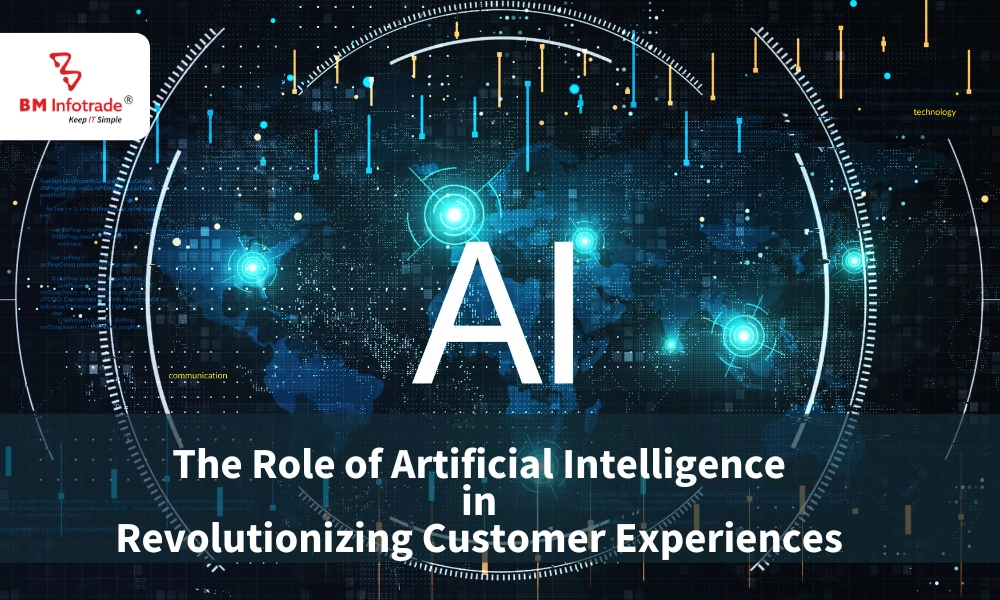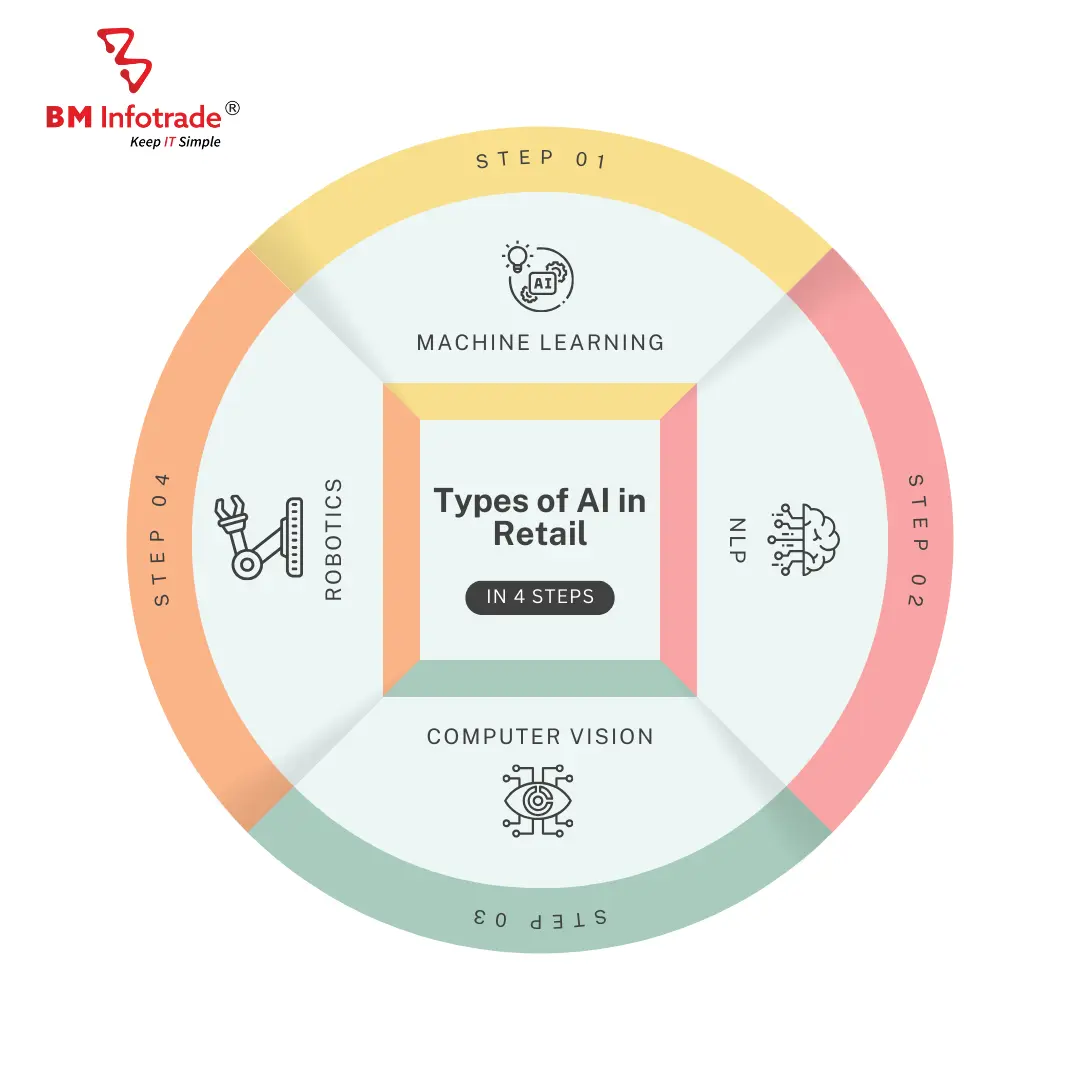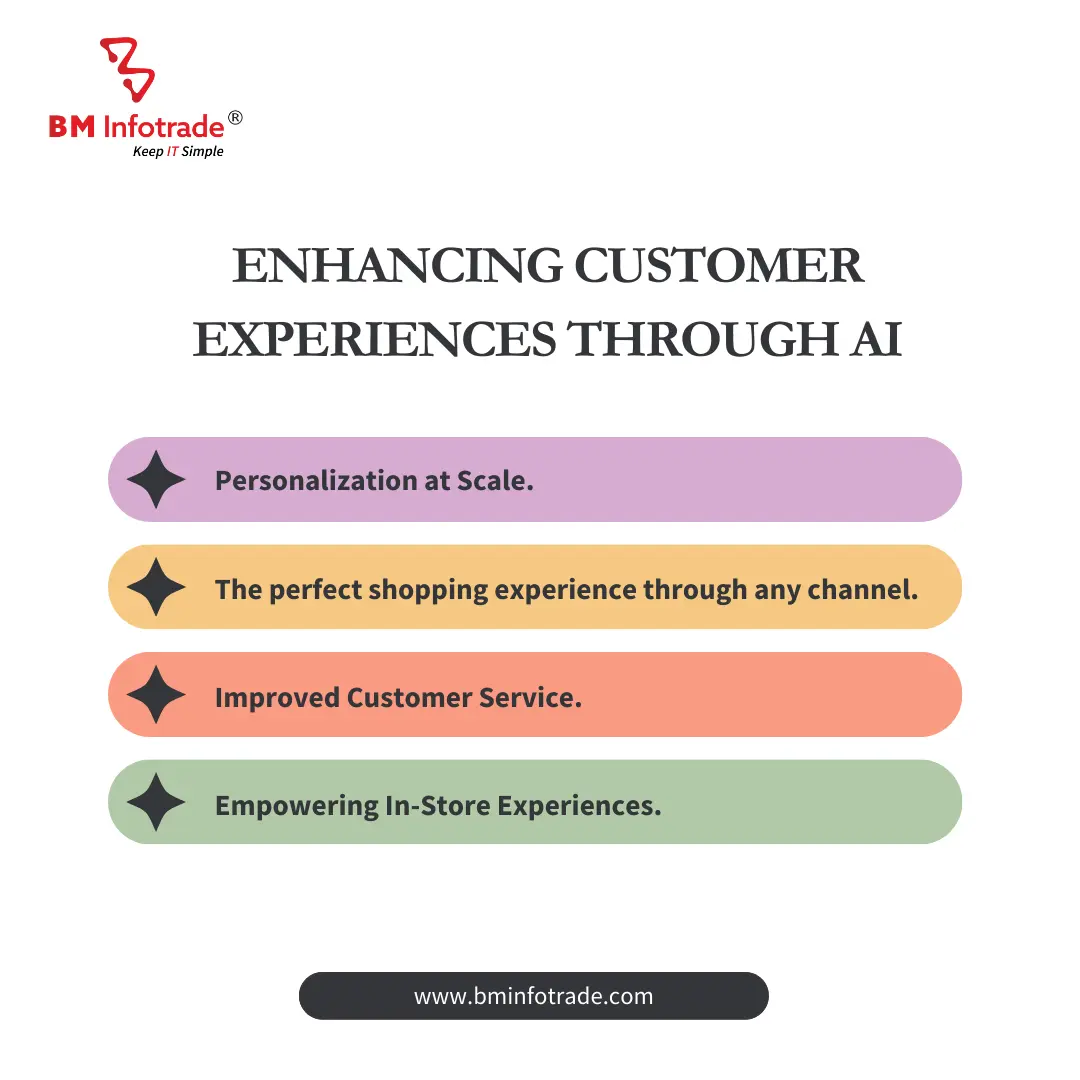The Role of Artificial Intelligence in Revolutionizing Customer Experiences
Retail uses AI as a way of making customer experiences better. Among the industries that use machines to simulate human intelligence is also Retail.

The Role of Artificial Intelligence in Revolutionizing Customer Experiences
Table of Contents
Today’s rapidly changing retail uses AI as a way of making customer experiences better. Among the industries that use machines to simulate human intelligence is also Retail. Retail is about offering products and excellent customer service that meets individual needs.
Definition of Retail AI
Through artificial intelligence technologies and methodologies, computers can perform human jobs. These include computer vision, machine learning, NLP, and robotics for retail AI. With these technologies, companies can analyze huge volumes of data, interpret human language, comprehend visual information or images, and carry out automation thus improving efficacy in their activities hence enhancing consumer engagement.
The Significance of Customer Experiences to Retailers
In retail business, customer interactions make all the difference between success and failure. In an era where there is too much choice, retailers must ensure that they provide customers with personalized, seamless, and memorable experiences so that they can attract and retain them. Whether it is online or offline interactions between the brand and consumers can affect purchase decisions.
AI versus Retail Customer Experiences
AI has changed how retailers interact with customers. AI-enabled analytics enable businesses to adjust their products based on consumer behavior, preferences, and intent enhances sales volume as well as brand familiarity since it predicts what customers want before they even approach it thereby reducing the customers’ efforts while providing improved product suggestions tailor-made for specific clients which enhance precision in meeting their needs.
Read More:- Why is AI important?
Understanding AI in Retail
Types of AI in Retail
AI has been used to optimize various aspects of retailing as this is used in the industry. In this article, we are going to look at some core features and functions of AI that improve different areas in retail while watching each other.

Machine Learning:
Another way is by training systems with data so that they can perform better without being specifically programmed for improvement. For example, machine learning supports predictive analytics and recommendation engines and demand forecasting models.
Natural Language Processing (NLP):
For example, machines can interpret and generate human language if they can use natural language processing. Still, on NLP, there include semantic search capabilities; sentiment analysis; and customer service chatbots among others which help communication and engagement apart from those involved in retail elsewhere.
Computer Vision:
Computer vision is where machines attempt to understand visual information by examining it visually; hence making sense out of images and videos using machine learning algorithms. Inventory control is one key area where computer vision is applied in the world of retail; Personalized marketing is another as facial recognition becomes an important part of such system giving rise to things like interactive advertisements; The ability to search for specific items through an online happens using image technology which has made shopping easier these days.
Robotics:
Robotics is all about using mechanical machines to do people’s jobs that they usually do. In retail, robotics does warehouse automation, autonomous delivery, and customer service robots thus making the operations efficient and effective.
Applications of AI in Retail
Personalized Recommendations: Consumers are confronted with personalized products based upon AI recommendation engines fueled by customer information to ensure relevance and increase success rates.
Inventory Management: AI algorithms enhance operations and earnings by forecasting demand, managing levels of stock as well as cutting down on inventory that may result in stockouts.
Customer Service Automation: Customer service interactions can be automated through chatbots powered by artificial intelligence which will provide instant answers to any query or problem a user may have thereby enhancing the overall experience.
Dynamic Pricing: Artificial intelligence allows businesses to change prices every time considering such factors as demand strength or weakness, competitor pricing policies, and segmentation of clients leading to higher revenues alongside more competitive advantages.
Visual Search: Visual search technology fueled by artificial intelligence enables consumers to discover visually related items through images rather than text-based searches hence improving search precision and facilitating easy identification of visually similar items.
Supply Chain Optimization: This is achieved by using AI to optimize logistics, predict supply chain disruptions, and improve demand forecasting resulting in faster order fulfillment and lower costs
Read More:- Data Science vs Data Analytics: Differences and Synergies
Enhancing Customer Experiences through AI
In this part, we will look at how artificial intelligence (AI) can be used to improve the customer experience within the retail sector with a focus on individualized interactions, frictionless omnichannel integration, better customer service as well as empowering physical store experiences.

Personalization at Scale
Customized Product Recommendations: AI algorithms study customer data such as purchasing histories, browsing habits, and demographics to come up with custom product recommendations that increase relevancy and boost sales.
Tailored Marketing Messages: These platforms powered by AI use machine learning for customers’ segmentation according to their tastes and activities thus enabling retailers to send personalized marketing messages via email, social media, etc.
Adaptive User Interfaces: AI-based user interfaces are capable of dynamically adjusting themselves based on what actions users take and what they prefer thus meeting the needs of each unique shopper thereby enhancing interaction levels while increasing satisfaction.
The perfect shopping experience through any channel
Pace the channels together: This would involve retailers using AI to ensure all their channels, be it in online platforms, mobile gadgets, and even brick-and-mortar stores are the same as they allow their customers to shop without any difference.
Seeing stocks: AI-based inventory management systems give a real-time view of product availability across multiple locations helping customers make informed decisions while reducing chances for unavailability or out-of-stock situations.
Customer care integration: By using support channels which include chatbots, email services, and phone assistance. AI-driven customer service platforms unify such touch points so that there is consistent provision of help and efficient response to clients.
Improved Customer Service
AI-empowered Chatbots: Chatbots that employ NLP can understand and respond to customer inquiries in real-time thus providing prompt assistance and increasing customer satisfaction.
AI-based Virtual Assistants: AI-powered virtual assistants give personalized recommendations, assist with product search and selection, and provide proactive support based on customer preferences and interactions.
Preemptive Customer Support: AI algorithms predict future possible problems or concerns based on historical data or actual behavior of the customers; thus, retail owners can address these issues in advance before they become huge.
Empowering In-Store Experiences
Intelligent Shelves and Interactive Displays: These AI-driven smart shelves and interactive displays create more engaging, in-store experiences by providing information about products, recommendations for purchases, as well as promotions tailored specifically for individual buyers.
AI-Fueled Fitting Rooms: AI-based fitting rooms use augmented reality (AR) and computer vision so customers can virtually try on clothes enabling them to make informed purchasing decisions and mitigate product returns.
Automated Checkout Processes: AI-powered check-out systems such as cashierless shops or self-checkout kiosks can expedite the checkout process reducing queuing time in favor of improved customer experience.
Read More: How AI is Changing Business Processes
Conclusion
Finally, putting artificial intelligence (AI) together will be the most important break for retailers to change customer experiences and grow sustainably. Retailers can offer tailored, consistent and swift interactions across offline and online silos using AI-powered machine learning, natural language processing, and computer vision-based technologies. However, the gains are massive for both consumers and businesses despite the difficulties associated with adopting AI like data security concerns and ethical issues.
The future of retail will be marked by hyper-personalization, digital integration, and AI-led innovation. By embracing AI technologies as well as adapting to ever-changing consumer expectations, sellers can create strong relationships with customers that will last long in a more competitive and vibrant marketplace leading to eventual business growth.







Anshul Goyal
Group BDM at B M Infotrade | 11+ years Experience | Business Consultancy | Providing solutions in Cyber Security, Data Analytics, Cloud Computing, Digitization, Data and AI | IT Sales Leader